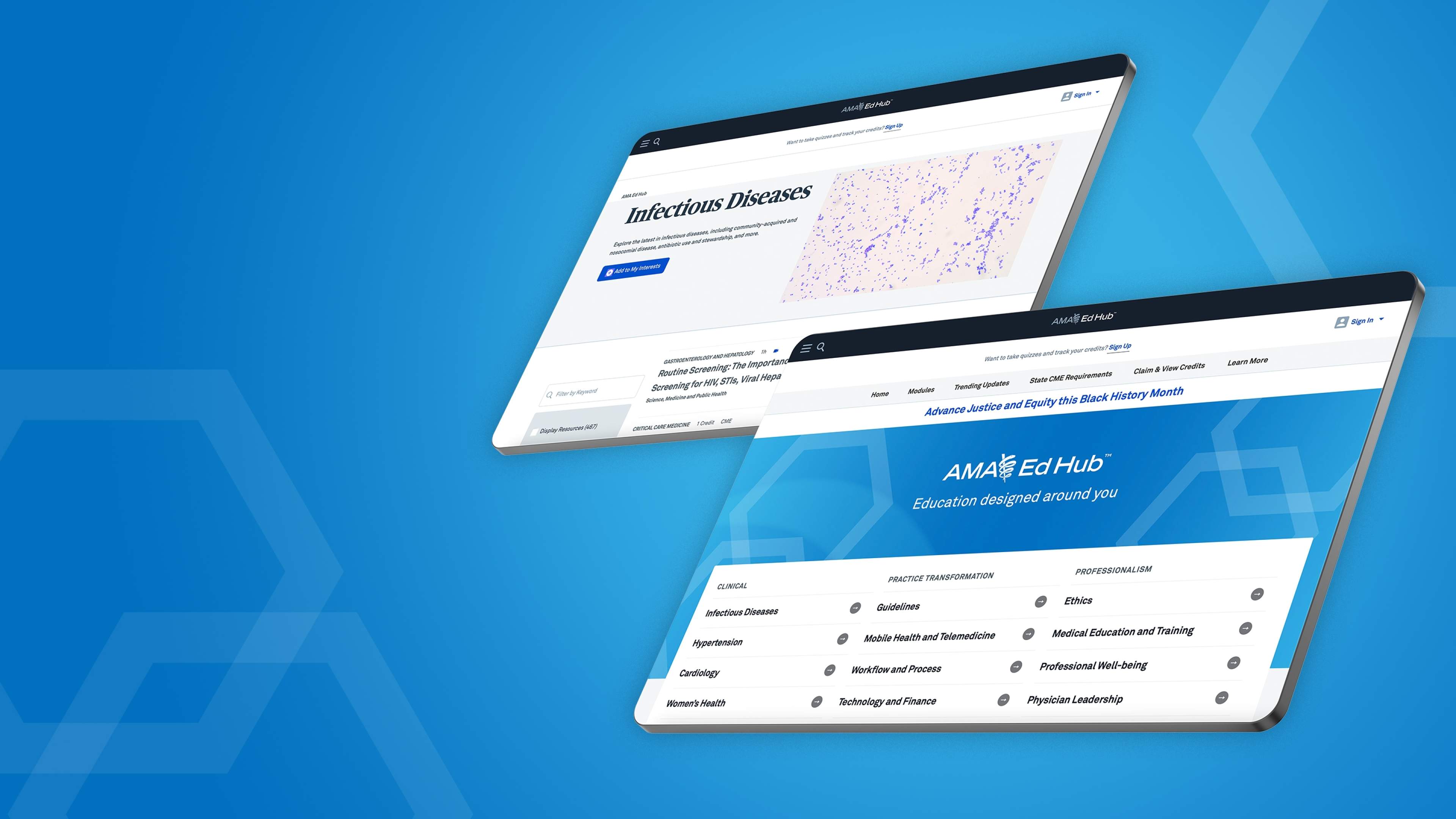We take a holistic approach, delving into the organizational priorities shaping your product, the tools and technologies powering your product, and the user motivations and pain points affecting how your product is perceived and valued.
Optimize
Improve the performance and user engagement of your digital products.
Product Performance Accelerator

If your digital product has seen disappointing customer adoption or ROI, TXI’s Product Performance Accelerator can unlock its full potential. This assessment combines data analysis, accessibility scoring, heuristics, and code audits to uncover opportunities to improve the product, make customers happier, and achieve maximum market success.

Optimization path
Assess current state
We begin with working sessions alongside client-side executives and product stakeholders to surface ambitions, constraints, and target outcomes. This informs where we orient our effort, what options we consider, and how we sequence the work ahead.
Define priorities and roadmap
We continuously focus on business objectives (decreasing operational cost, increasing customer satisfaction, unlocking incremental revenue, etc.) to ensure we’re solving problems that matter to your organization and your users.
Launch in small increments
Smaller, frequent releases enable you to get new and improved working software into your users’ hands quickly and continually.
Measure and evolve
We use a range of tools and techniques to evaluate progress, comparing recent product performance to the baseline measurements captured at the project’s start.
TXI helped us think of things we hadn’t thought about. They helped us make it so anyone in the world could interact with the lights using their cell phones.
Assess current state
Optimize engagements begin with working sessions alongside client-side executives and product stakeholders to surface ambitions, constraints, and target outcomes. We use this early alignment to inform where we orient our effort, what options we consider, and how we sequence the work ahead.
Everything we learn is synthesized into themes and distilled into potential recommendations, pooled together for reflection, consideration, and action across our team and your organization.
During this assessment, we get into the specifics of your technology and user experience:
Code audits enable us to assess code quality, infrastructure, and efficiency.
UX Assessments build an understanding of how your users interact with your product and where opportunities exist to improve the existing experience and expand into new touchpoints.
Product Analytics reveal bottlenecks and drop-offs that may be impacting performance.
Baseline Measurements quantify your current state, enabling us to assess future impact.

Define priorities and roadmap
We’ll define a valuable, viable, and pragmatic course together.
- In collaborative working sessions we identify the most valuable problems to solve and surface the key considerations informing approach and trade-offs.
We use rapid prototyping to quickly form low-fidelity versions of our most promising ideas, which lets us assess the usefulness of concepts with users and evaluate business and technical feasibility.
A technical architecture helps us visualize the potential changes (and benefits) to your infrastructure to unlock greater levels of stability and scalability.
The product roadmap sequences what we’ll focus on Now, Next, and Later.
One of the most important aspects of our work together is evaluating a range of potential product enhancements for their likely impact on your business, system performance, and user experience. We continuously focus on business objectives (decreasing operational cost, increasing customer satisfaction, unlocking incremental revenue, etc.) to ensure we’re solving problems that matter to your organization and your users.
Typically, the scope we define is a mix of incremental improvements to your existing product along with the creation of new features and / or touchpoints. On the small end of the spectrum, we may collectively prioritize building a new feature or two. On the more ambitious side, we may opt to design and develop a custom mobile application that uniquely satisfies user needs.
Launch in small increments
While the specifics of what we build varies project to project, we approach our work with the beliefs that…
Usability is critical. We know that a product may be technically sound, but it won't be successful if it’s not easy to use. So we create a user-centered design that is intuitive and easy to use.
Flexibility ensures longevity. Technologies, user needs, and business priorities constantly evolve, so we make sure that the foundations we put in place can evolve in tandem with them over time.
Measurability clarifies what’s working. Whether through product analytics or tracking real-world activities, we seek to measure the success of our efforts and adapt our approach accordingly.
Accessibility should be prioritized in technology because we all have access needs as humans. At its heart, human innovation means creating tools to meet our varied needs.
With a clear sense of what to work on right away, we deploy integrated teams in agile design, development, and deployment cycles.
Our teams, composed either entirely of people from TXI or a blend of team members spanning our company and yours, emphasize speed to value, ensuring that the work we shape and ship first generates the highest possible return on investment. Smaller, frequent releases enable you to get new and improved working software into your users’ hands quickly and continually.
They were an incredibly personable and genuine group, and they brought a lot of really impressive technical expertise. It was a very easy process.
Measure and evolve
We use a range of tools and techniques to evaluate progress, comparing recent product performance to the baseline measurements captured at the project’s start. During this ongoing exercise, we’ll evaluate each possible product enhancement for its business value, user desirability, and technical feasibility to move you closer to your target outcomes.
All of this leads to digital products that are more useful, scalable, and impactful, resulting in higher customer lifetime value, increased user engagement, lower operating costs, and decreased churn.
Product Analytics
Product analytics provide a rich set of data points that help us understand user behaviors as well as opportunities to further enhance product performance. We look closely at things like user flows, bottlenecks, drop-off points, server response times, and page load times to zero in on problems to solve.
A/B Testing
A/B testing lets us incrementally improve high-value features by deploying multiple variations of an interface or flow and testing how well each performs. Lessons learned in each test often inform improvements elsewhere in the product.
Evaluative research
Evaluative research provides a view of product performance through the eyes of users. This often includes usability testing to assess interfaces and identify problem areas, qualitative inputs such as user interviews, and quantitative methods such as surveys to better understand product perceptions, unmet needs, and overall goals.
FAQs
-
What are the root causes of technical issues that cause digital products to lag behind?
- Poor infrastructure: If the infrastructure supporting the digital product is not robust enough, it can lead to slow processing times, delays, and other technical issues impacting user experience.
- Inefficient code: Inefficient code can cause a digital product to lag behind. This can happen if the code is poorly written, contains bugs or errors, or is not optimized for the particular hardware or operating system.
- Lack of scalability: Digital products not designed to scale up as the user base grows can cause technical issues. If the product is not architected to handle many users, it can lead to slow load times, crashes, and other issues.
- Integration issues: Digital products that rely on multiple components or third-party integrations can also be prone to technical issues. If these components are not properly integrated or tested, it can lead to conflicts, slow performance, and other problems.
- Security issues: Security vulnerabilities can also cause digital products to lag behind. If a product is not secure, it can be prone to attacks, leading to downtime, data breaches, and other technical issues.
- Legacy systems: A digital product relying on legacy systems or outdated technology can also lead to technical issues. These systems may be unable to keep up with modern demands, leading to slow performance, incompatibility issues, and other problems.
- Insufficient testing: Finally, insufficient testing can also cause technical issues. A product not thoroughly tested before launch can lead to bugs, errors, and other technical issues that can impact user experience.
-
Why do digital products fall flat with end-users?
Digital products can fall flat with end-users for several reasons that often lead to missed opportunities and business objectives.
A poor user experience, like not being intuitive, difficult to navigate, or confusing to use, can often lead to frustration and dissatisfaction. Users may abandon it in favor of a more user-friendly competitor. To avoid falling flat, it's essential to prioritize user experience during the product development process. This involves conducting user research, understanding user needs and pain points, and designing an intuitive and user-friendly interface. Regular usability testing can also help identify areas for improvement and ensure that the product meets user needs and expectations. Doing so can build a loyal user base and stand out in a crowded market.
Perceived value can also be a significant factor. If users do not feel that the product offers enough value or meets their needs, they may be less likely to use or recommend it to others. The value will also decrease if users experience technical issues. If the product is prone to crashes, bugs, or slow performance, users may quickly lose interest and move on to a competitor's product.
-
What is rapid prototyping?
Rapid prototyping is a process of quickly creating a digital prototype of a product, system, or service to test and refine the design, functionality, and performance before investing time and resources in its full-scale production.
The most common types of prototypes in digital products:
- Low-Fidelity Prototype: This is a basic, rough version of the product that can be created using pen and paper or simple digital tools. Low-fidelity prototypes test basic concepts and get user feedback before moving on to more detailed prototypes.
- Medium-Fidelity Prototype: This more detailed product version can be created using digital tools like Sketch, Miro, or Figma. Medium-fidelity prototypes may include interactive elements like clickable buttons but are not fully functional.
- High-Fidelity Prototype: This is a fully functional version of the product that closely resembles the final product. High-fidelity prototypes are typically created using advanced digital tools like HTML and CSS. They include interactive elements like animations, user input, and simulated data.
Each type of prototype has its own strengths and weaknesses, and the choice of prototype type depends on the goals of the product development process and the stage of development. Ultimately, benefits include faster development times, lower costs, and the ability to identify and fix design flaws and performance issues early. This helps to minimize the risk of costly mistakes and improve the overall quality of the final product.
-
What is a code audit for digital products?
A code audit is a comprehensive review of the digital product's technical infrastructure and codebase. It is conducted to identify potential technical issues, security vulnerabilities, and performance bottlenecks. It's important for digital products because it helps ensure the product is functioning optimally and securely, and it reduces the risk of technical issues that could harm the product's reputation or result in loss of revenue.
Some of the key areas covered in a code audit include the product's architecture, database design, server configurations, code quality, security protocols, and performance metrics. At TXI, it is conducted by a team of experienced engineers who specialize in software development and architecture.
The duration of a code audit depends on the complexity of the digital product being audited. Generally, a code audit can take anywhere from a few days to several weeks to complete. Once completed, our clients will receive a code audit including a detailed report of findings, recommendations for improvement, a risk assessment, and an action plan to address any identified issues.
At TXI, we recommend conducting a code audit at least once a year or whenever major updates or changes are made to the product.
-
What is the purpose of a user experience audit?
The purpose of user experience (UX) audit is to evaluate how users interact with a product or service and to identify opportunities for improving the overall user experience. UX audit can be applied to any product or service, including websites, mobile apps, software, hardware, and other digital or physical products.
The goals of UX audit include:
Identifying user needs and pain points: UX assessment helps to understand the needs, expectations, and frustrations of users when interacting with a product or service. By identifying pain points, UX assessment can help improve user satisfaction and retention.
Evaluating usability: UX assessment evaluates the ease of use and accessibility of a product or service. It helps to identify any usability issues, such as navigation problems, confusing user interfaces, or lack of consistency, that can hinder the user experience.
Assessing user engagement: UX assessment evaluates how users engage with a product or service and identifies opportunities for improving user engagement. This includes assessing user flows, interactions, and engagement metrics.
Improving product or service performance: UX assessment can identify technical or functional issues that affect the performance of a product or service. This includes identifying bugs, slow loading times, and other performance issues.
Enhancing user satisfaction: UX assessment helps to ensure that the product or service meets user expectations and provides a positive experience. By improving the user experience, UX assessment can increase user satisfaction, engagement, and loyalty.
Overall, UX assessment is critical to creating a successful product or service that meets the needs and expectations of users. It provides valuable insights into the user experience and helps to identify opportunities for improvement, ensuring that the product or service is user-friendly, engaging, and effective.
-
What are the pros and cons of a heuristic evaluation?
Heuristic evaluation is a powerful method for assessing the usability of digital products. It is a technique used in digital product design to identify potential usability issues and determine how well the product meets design principles.
The first step in a heuristic evaluation is to define the evaluation criteria. The criteria should be based on design principles, and should take into account factors such as user-centered design, human-computer interaction, and interaction design. The evaluation criteria should also consider user interface design and UX design principles. Once the criteria have been defined and prioritized, it is time to start the evaluation.
The second step is to review the digital product and identify potential usability issues. This step involves going through the product and identifying any aspects of the user interface or interaction design that may be problematic. It is important to take into account both the positive and negative aspects of the product design, and to document any issues that are identified. It is important to also include accessibility testing in this part of the evaluation process. Accessibility testing involves assessing the product design to ensure that it is usable by people with disabilities. This testing can help identify potential issues that may make the product difficult or impossible to use for people with disabilities.
The third step is to conduct a cognitive walkthrough. This is a technique used to assess how well the product design supports user goals and tasks. It involves imagining how a typical user would interact with the product, and identifying any obstacles or issues that may arise during this process. The cognitive walkthrough should take into account the user's mental model, and should be conducted from the user's perspective.
The fourth step is to conduct user testing and usability testing. These tests involve observing how real users interact with the product and identifying any issues or usability problems. It is important to gather feedback from a diverse range of users to get a comprehensive view of how the product is performing. User testing and usability testing can be conducted using a variety of techniques, including surveys, interviews, and observation.
The final step is to summarize the findings in a design critique. This involves reviewing the findings of the heuristic evaluation, cognitive walkthrough, user testing, and usability testing, and identifying areas for improvement. The design critique should take into account the design principles and user-centered design and should prioritize the most important issues that need to be addressed.
While heuristic evaluation is a valuable method for evaluating digital products, there are also some potential drawbacks. One of the main drawbacks is that heuristic evaluation relies on the experience and expertise of the evaluator. This can lead to inconsistencies in the evaluation process and may result in some usability issues being overlooked. Additionally, heuristic evaluation may not be suitable for all types of digital products or for all types of users. For example, it may not be effective for products that are highly specialized or that require a high degree of technical knowledge.
On the other hand, there are also several advantages to using heuristic evaluation. One of the main advantages is that it can be conducted quickly and efficiently, making it a cost-effective method for evaluating digital products. It is also a flexible method that can be adapted to different types of products and users. Additionally, heuristic evaluation can help identify potential usability issues early in the design process, which can save time and resources by avoiding the need for extensive redesigns later on.
Heuristic evaluation is a valuable method for evaluating the usability, user experience, and accessibility of digital products. By following the evaluation process, including accessibility testing, and conducting a design critique, designers can identify potential usability issues and make changes to the product design to improve usability and user experience. While there are potential drawbacks to heuristic evaluation, the advantages make it a valuable method for evaluating digital products. By following these steps, designers can ensure that their digital products are optimized for usability and provide a great user experience.
-
What is the purpose of product analytics?
Product analytics refers to an assessment of a product or service to improve its performance, usability, and customer satisfaction. Product analytics involves collecting and analyzing data from various sources, such as user interactions, usage patterns, and performance metrics, to gain insights into how the product or service is being used and to identify areas for improvement.
The goals of product analytics include:
Understanding user behavior: Product analytics helps to understand how users interact with a product or service and how they navigate through the various features and functionalities. This includes analyzing user flows, clickstream data, and other user interactions.
Improving product usability: Product analytics helps to identify usability issues and opportunities for improvement, such as confusing user interfaces, long load times, or other technical issues that impact the user experience.
Optimizing product performance: Product analytics helps to identify performance bottlenecks, bugs, and other technical issues that impact the performance of a product or service. This includes analyzing server response times, page load times, and other performance metrics.
Improving customer satisfaction: Product analytics helps to understand user needs, preferences, and pain points, and provides insights into how to improve the overall user experience. By improving customer satisfaction, product analytics can help to increase customer loyalty and retention.
Optimizing business outcomes: Product analytics helps to identify opportunities for optimizing business outcomes, such as increasing conversion rates, reducing churn, and improving customer lifetime value.
Overall, product analytics is critical to creating a successful product or service that meets the needs and expectations of users. It provides valuable insights into user behavior and helps to identify areas for improvement, ensuring that the product or service is effective, engaging, and aligned with business goals and objectives.
-
How to A/B test in custom software?
A/B testing is a technique used in custom software development to evaluate the effectiveness of different versions of a product or feature. It involves creating two or more variations of a product or feature and then testing them with a sample group of users to determine which one performs better.
The A/B testing process typically involves the following steps:
Identify the objective: The first step in A/B testing is to identify the objective of the test. This could be to improve user engagement, increase conversions, or reduce churn, among others.
Create variations: The next step is to create different variations of the product or feature that you want to test. For example, you might create two versions of a landing page with different headlines, images, or calls-to-action.
Define metrics: Once you have created the variations, you need to define the metrics that you will use to measure the performance of each version. This could include metrics such as click-through rates, conversion rates, or engagement rates.
Test with users: You then need to test each version with a sample group of users. This could be done by randomly assigning users to either version A or version B, and then measuring the performance of each version.
Analyze results: Finally, you need to analyze the results of the A/B test and determine which version performed better based on the defined metrics. You can then use this information to make data-driven decisions about which version to implement.
A/B testing is an effective way to improve the user experience and the performance of a product or feature. By testing different variations and measuring the results, you can identify the version that performs best and make informed decisions about how to optimize your product or feature to meet user needs and business goals.
Let’s enhance your digital product's experience, together
TXI is here to help you pinpoint the reasons behind technical glitches and determine what's getting in the way of user engagement and satisfaction. We look at the bigger picture, understanding your product's role in your organization, the tools it relies on, and what users want. Let’s tackle the most important issues and channel our energy into making improvements that bring you better returns. We’re here to help.

Find out how intelligent solutions can accelerate growth for your organization.







